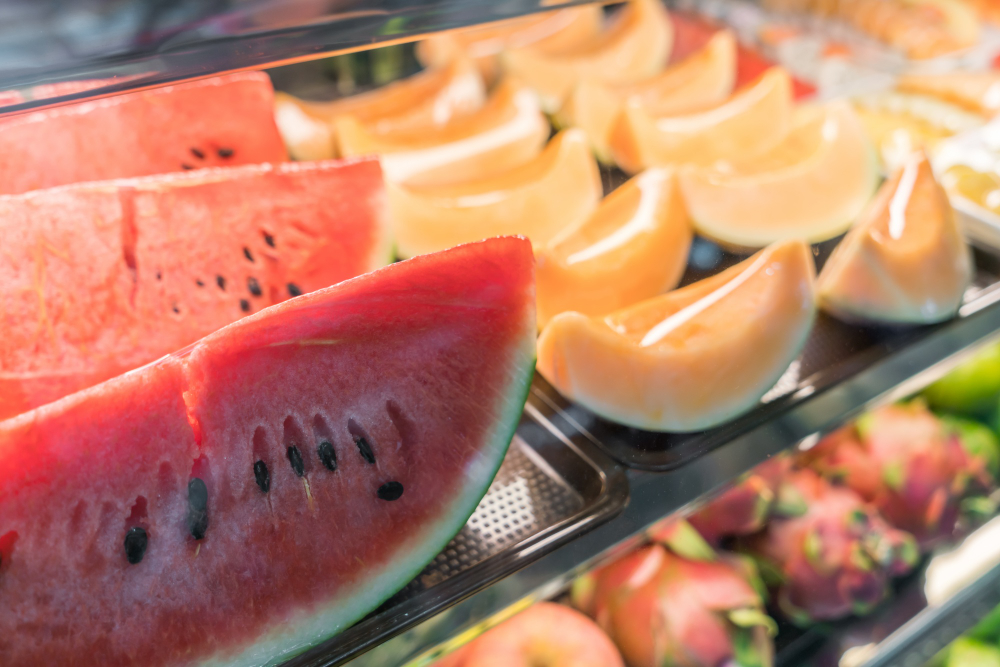Pineapple, watermelon, melon, mango – the variety of pre-cut fruits on Spanish supermarket shelves is immense. Many opt for these convenient, yet often more expensive, options due to time constraints. But beware: the fruit’s natural protective layer is missing, which can pose health risks at high temperatures.
Health Risk from Pre-Cut Fruit? AESAN Issues a Warning
The Spanish Agency for Food Safety and Nutrition (AESAN) has issued an “alert” in its latest report. Short-term storage of cut fruit at room temperature does not appear to significantly impact the development of foodborne pathogens – however, this is only under specific conditions. This requires immediate refrigeration and quick consumption of the product.
The Golden Rule: Temperature and Time Are Crucial
AESAN emphasizes that these types of foods must maintain a temperature below 25 °C and be stored for less than 3 hours. Storage should be in a well-ventilated area protected from sunlight, followed by continuous refrigerated storage below 5 °C. Experts strongly advise discarding fruits that are overly ripe, wounded, or cracked, as they can be potential sources of contamination.
Microbial Behavior: Not Every Fruit Reacts the Same
Microbial behavior largely depends on the type of fruit. Melon, watermelon, and papaya are more susceptible to pathogen growth, while pineapple is less susceptible due to its lower pH. It can therefore be concluded that storing cut melons, watermelons, and papayas at room temperature can pose a health risk.
Recommendations for Safe Purchase of Cut Fruit
AESAN confirms that the sale of cut fruit is generally legal and safe, provided certain precautions are taken to prevent bacterial proliferation:
- Storage Temperature: Keep below 25 °C.
- Storage Time: Do not exceed 3 hours at room temperature.
- Refrigeration: Continuously refrigerate below 5 °C afterwards.
How to Identify Contaminated Fruit: Protection Against Salmonella and E. coli
Salmonella and E. coli bacteria are common causes of diarrheal diseases. The insidious thing is that they do not alter the appearance or smell of fruits and vegetables. Symptoms such as nausea, vomiting, fever, diarrhea, and fatigue can indicate contamination.
To minimize the risk of poisoning, consider the following tips:
- Visible Damage: Fruits and vegetables with visible damage should be discarded as they are more susceptible to contamination.
- Do Not Soak: Soaking can allow bacteria on the surface to infiltrate the inner tissue.
- Wash Thoroughly: Always wash fruits and vegetables thoroughly before consumption.
- Avoid Cross-Contamination: Keep cut fruit away from raw meat, fish, or eggs to prevent cross-contamination.




